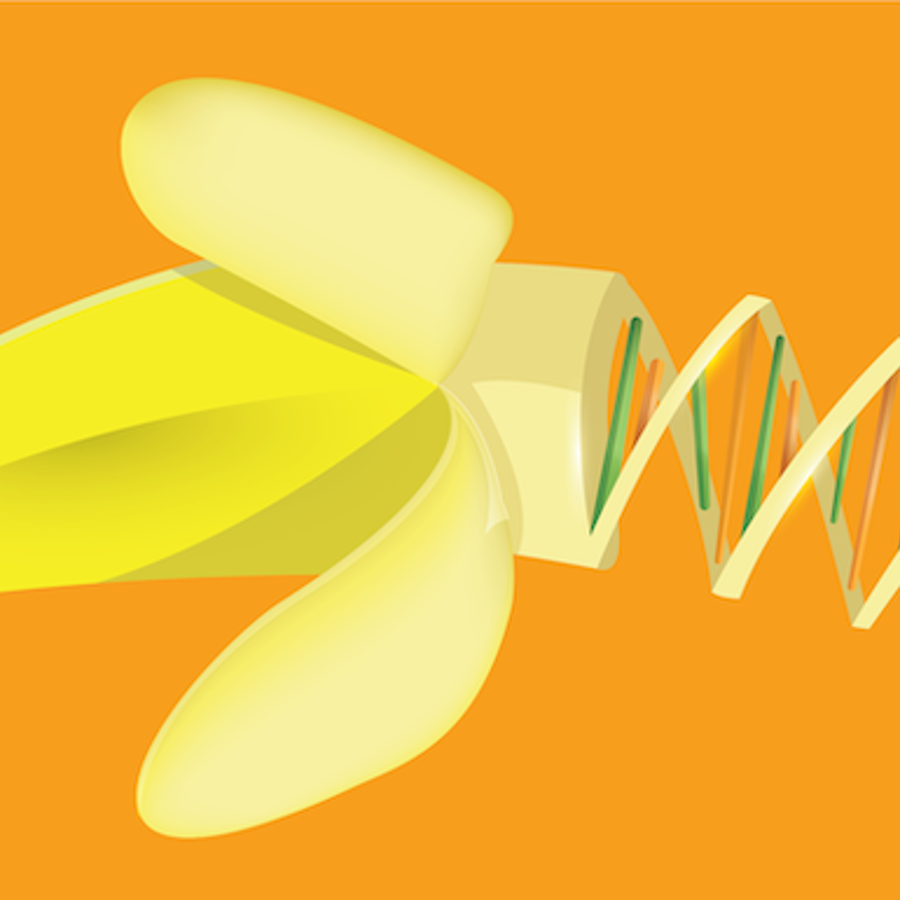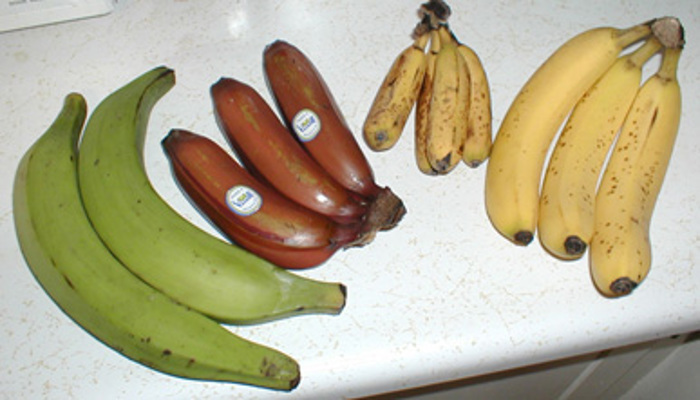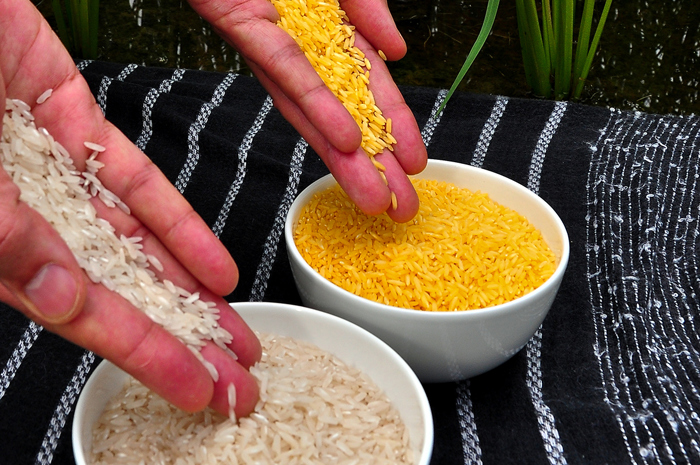
Do you think bioengineered foods will go beyond food preservation and pesticide resistance?
February 16, 2011

- Related Topics:
- GMOs,
- Genetic engineering,
- Plant biology
A high school student from Michigan asks:
"I have heard that bananas can now be genetically modified to carry vaccines. Is this any different from the GM foods we see on the grocery store shelves every day? Do you think bioengineered foods will be taken beyond food preservation and pesticide resistance?"
A vaccine-carrying banana is certainly a genetically modified (GM) food, just like lots of the products in your local grocery store. Any food product that contains an artificially inserted piece of DNA from another plant, animal, bacterium, or virus is a GM food. And a vaccine-carrying banana definitely has an extra gene or two from an outside source!
That brings me to the second half of your question. There are already 'pharma-crops' that carry genes for many different nutrients, vaccines and medicines being grown in several parts of the U.S. But you won't find them in a grocery store just yet.
Most of what's on the shelves now are 'first generation' GM foods. Scientists designed them to increase food production worldwide. So they were modified to grow faster, be more disease-resistant, produce more food, and to last longer. Like the square tomato, which is easier to pack, lasts longer and doesn't squish as easily.
The most important difference between the first and second-generation GM (GM2) foods is in what their foreign genes do. With the older GM foods, the products of the foreign genes don't affect humans at all. They only improve crop yield and quality.
GM2 foods are designed to improve human health. If used correctly, they will have a positive impact on our health. If used incorrectly, they may have no effect or even be harmful.
So for obvious reasons, these GM2 foods need to undergo some extra testing. Scientists need to make sure they can actually help under normal conditions. And, of course, that they cannot do harm when used improperly.

For example, only people who need the drugs or vaccines should be eating these foods. And they must get them in the right doses. It wouldn't help if a baby ate a single bite of a vaccine-containing banana and spit it out.
Another problem that came up with a recent GM food was cooking. Scientists engineered potatoes that carried a vaccine for hepatitis-B. It worked really well, but who likes to eat raw potatoes? And when the potatoes were cooked, the vaccine was destroyed.
And what if seed corn that had some sort of medicine in it got mixed in with everyday corn? Now farmers would have to deal with contaminated crops or consumers would accidentally be getting medicines.
The GM2 crop closest to coming to market is probably golden rice. Scientists designed golden rice to make lots of vitamin A which rice normally doesn't make. If everything goes as planned, this rice will save thousands of lives each year and prevent millions of cases of blindness.

When golden rice first came out, there were concerns about whether it could deliver enough vitamin A or whether it would deliver too much. And there were concerns about what cooking might do to the vitamin A, how much of the vitamin A could be taken up in the absence of fats, etc. Recent studies have helped to sort these out and golden rice will start being used large scale in the next few years.
Other GM2 crops have not progressed nearly as far. But they will. At some point in the future, people may get some of their medicines from fruits and vegetables. Certainly, they will be getting more nutritious foods that will help to prevent disease.
A lot of research goes into making sure that GM foods are safe and work the way they are supposed to. GM2 crops would make a big difference to people's health. As I said, golden rice would save millions of people from going blind. And fruits containing vaccines and drugs could help people in remote places in where it isn't easy to distribute medicines.
But the practical aspects of getting such foods to consumers are still being worked out. How and where to produce such foods, who should eat them, and how much they should eat. So though it might take a little more time to see them in stores, they would certainly be worth the wait!

 Skip Navigation
Skip Navigation
